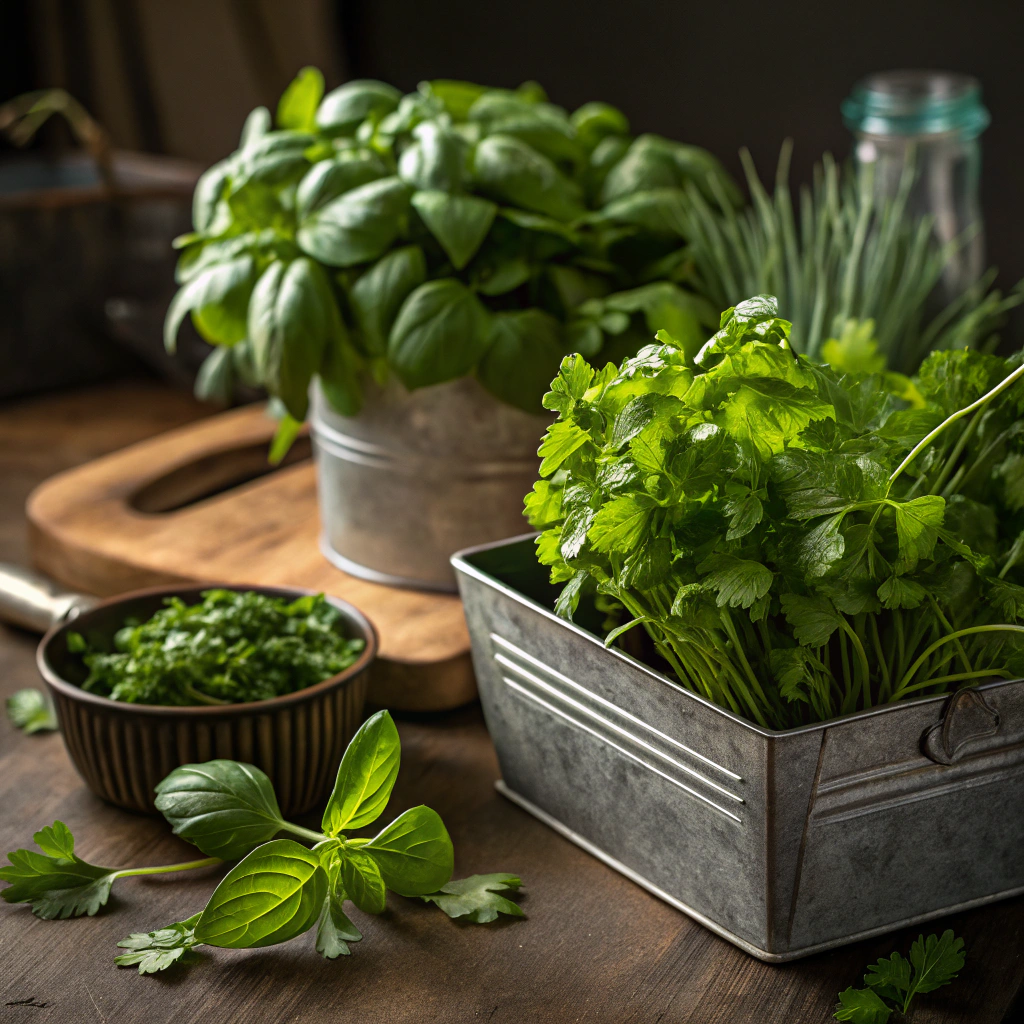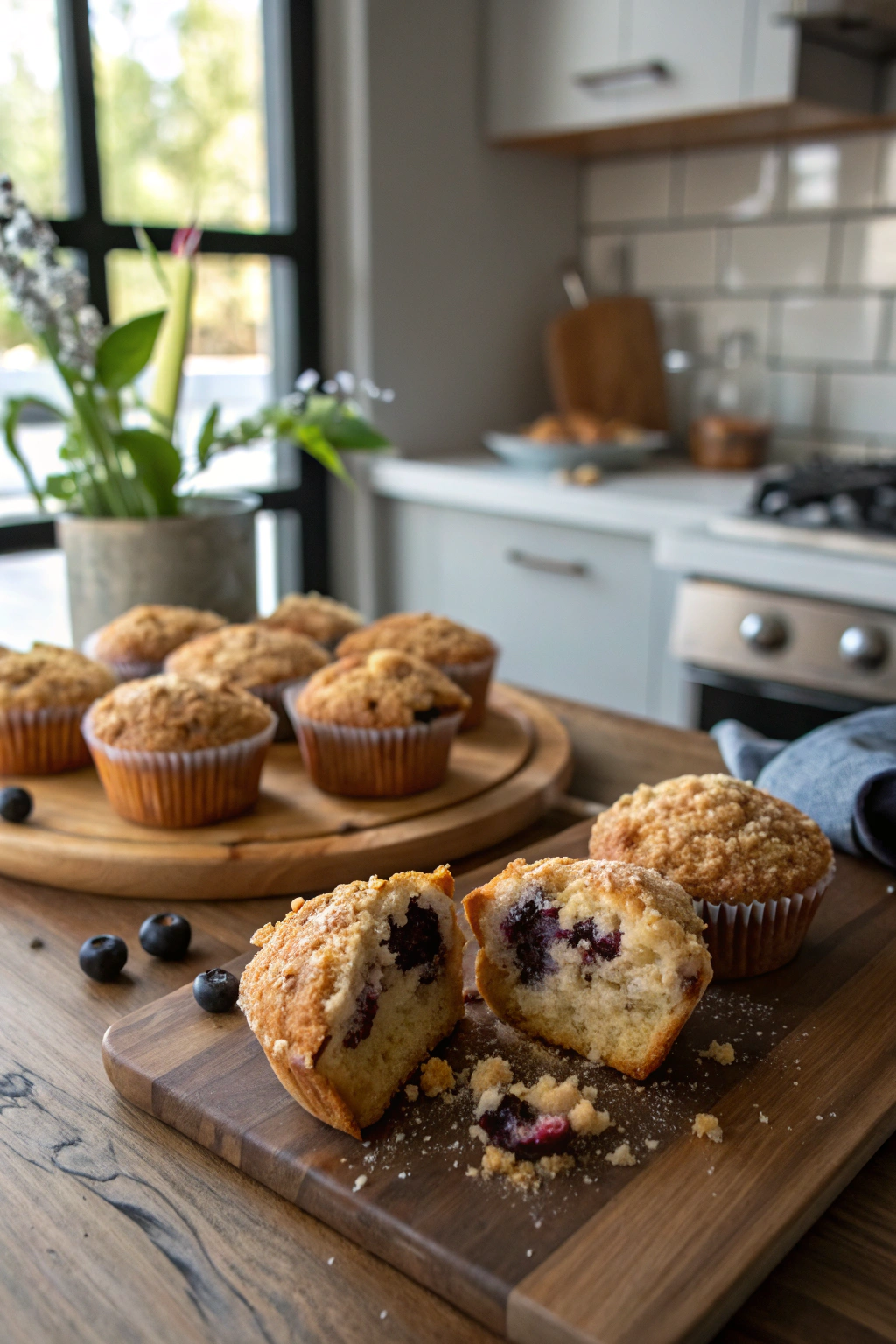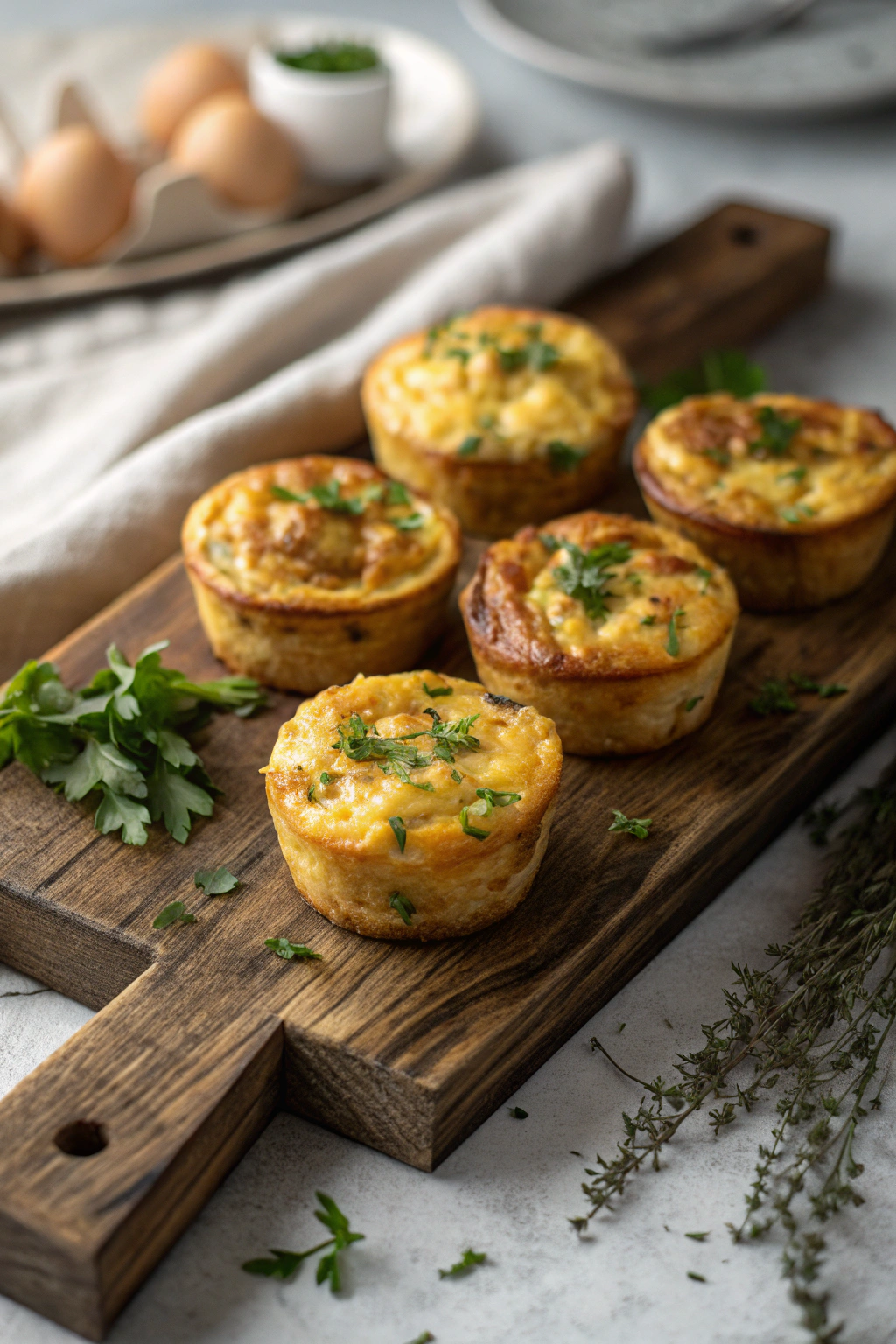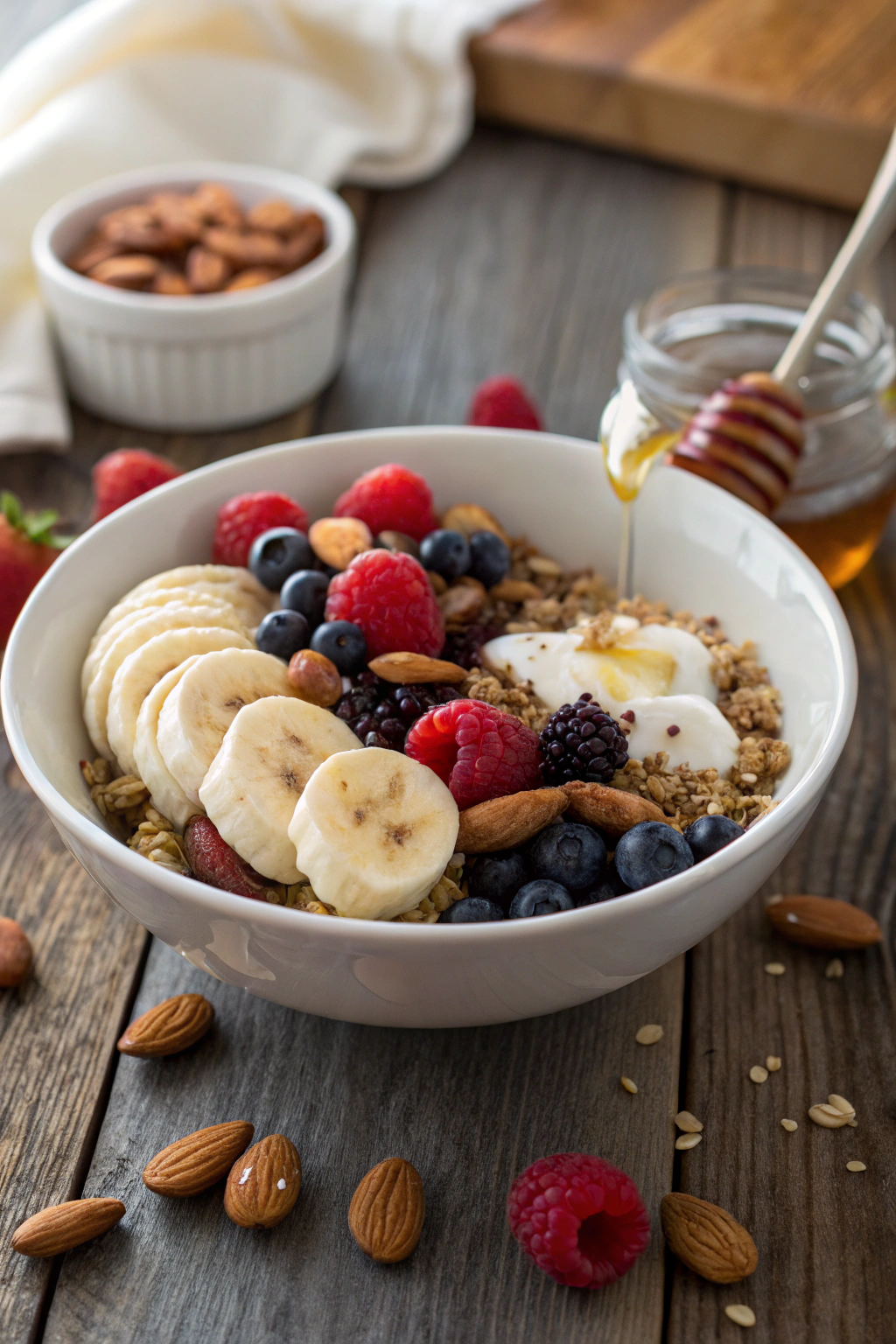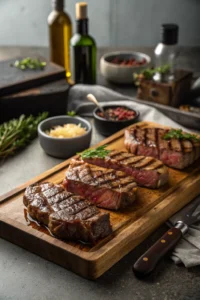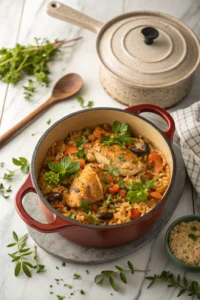Oh my goodness, can we talk about herb storage fails? Last summer, I spent $8 on gorgeous organic Basil from the farmers’ market, only to find it turned to black mush in my fridge three days later. Ugh! After that expensive lesson (and many more wilted herbs), I went on a mission to figure out how to keep my fresh herbs actually, well… fresh!
I’ve tested practically every storage method out there – from mason jars to fancy specialty containers for fresh herb storage, and let me tell you, it’s been quite the journey. Whether you’re growing herbs in your backyard or buying them from the store, proper storage is key to getting your money’s worth and having fresh herbs ready whenever inspiration strikes.
Essential Features of Fresh Herb Storage Containers
Why Regular Containers Don't Cut It
Listen, I used to think throwing herbs in a plastic bag was fine – boy, was I wrong! Regular containers create two major problems: too much moisture (hello, slimy herbs!) or too little (crispy, dried-out leaves, anyone?).
Plus, most produce bags trap ethylene gas, which speeds up spoilage. Last week, my neighbor Jane showed me her sad Cilantro that went yellow in a regular tupperware – a common mistake! The real kicker is that standard containers don’t provide the airflow herbs need to stay perky, and they often crush delicate leaves.
Trust me, I learned this the hard way after ruining countless batches of Mint and Parsley. So what are the best fresh herb storage containers?
Material Matters: Glass vs. Plastic vs. Ceramic
After testing dozens of containers (my kitchen cabinets were seriously overflowing!), I’ve found each material has its sweet spot for storing fresh herbs. Glass containers are my go-to for sturdy herbs like Rosemary and Thyme – they’re super easy to clean and don’t hold onto smells.
But here’s the thing: plastic isn’t all bad! Lightweight BPA-free containers work great for tender herbs like Basil and Cilantro, especially when you’re short on fridge space.
Ceramic? Well, it looks gorgeous on your counter, but it can be tricky to monitor moisture levels. Pro tip: if you see condensation forming, that’s your cue to adjust humidity ASAP in your fresh herb storage containers!
Ventilation Systems in Herb Keepers
Y’all won’t believe how much difference proper airflow makes! The game-changer was discovering containers with adjustable vents – total lifesaver for different types of herbs. My Dill stays perky for nearly two weeks now!
Some containers use clever water reservoirs with tiny holes that create the perfect humidity level. Others have these nifty removable baskets that lift herbs above any excess water. I’ve even MacGyvered my own system using mason jars with mesh tops!
Just remember: different herbs need different levels of ventilation when using fresh herb storage containers. Basil loves it humid, while Oregano prefers things a bit drier. Have you tried any of these ventilated herb keepers?
Top-Rated Herb Storage Solutions for Your Kitchen
Modern Fresh Herb Preserving Systems
I’ve tried every herb storage method out there, and let me tell you – those fancy herb saving containers really do work! My favorite is the glass jar system with a water reservoir at the bottom. Just pop your herbs in like a bouquet, add a splash of water, and cover loosely with the included plastic bag. My basil stays perky for nearly two weeks this way!
For delicate herbs like cilantro and parsley, I’ve had great success with the special produce containers that have built-in air vents. The trick is adjusting those little vents based on which herbs you’re storing – more airflow for hardy rosemary, less for tender dill.
Budget-Friendly Container Options
You don’t need fancy gadgets for great herb storage! I learned this trick from my grandmother: wrap herbs loosely in slightly damp paper towels, then pop them in a reused plastic container or zip-top bag. Leave it slightly open for airflow.
Mason jars work wonderfully too – just trim the stems, add an inch of water, and cover with a plastic bag secured with a rubber band. For dried herbs, clean out old spice jars or small jam containers. I label mine with masking tape and a marker. The key is keeping herbs visible so you remember to use them! Even takeout containers can become herb keepers with a few holes poked in the lid.
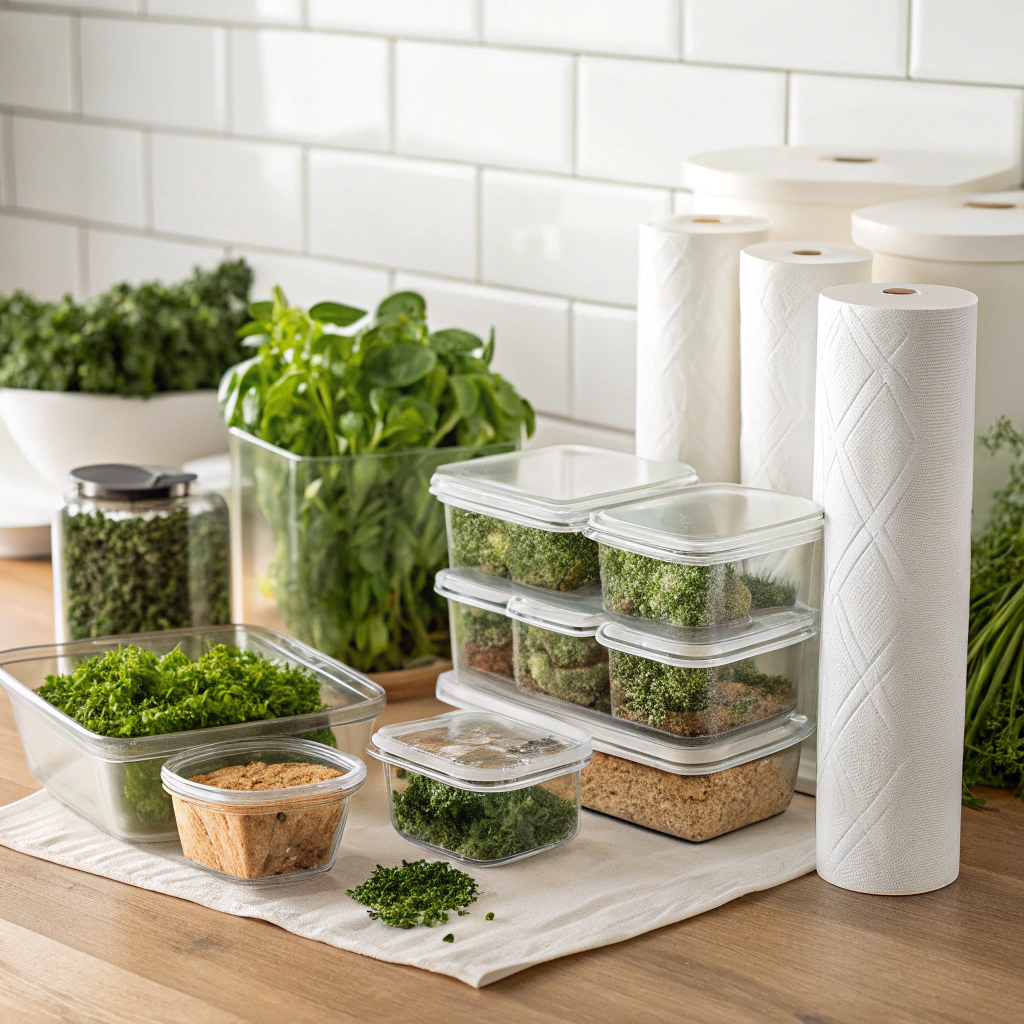
Space-Saving Designs for Small Kitchens
Living in a tiny apartment taught me some clever herb storage tricks! Over-the-door shoe organizers make amazing vertical herb gardens – each pocket holds a small pot perfectly. I hung a tension rod under my kitchen window and use S-hooks to hang small herb planters.
For the fridge, I love stackable containers that clip together. This keeps my herbs organized without taking up too much space. Another space-saver: magnetic spice tins stuck right on the fridge for dried herbs.
My favorite hack is using a hanging fruit basket – the different levels keep herbs separate while saving counter space. Do you have any clever small space solutions for fresh herb storage containers?
How to Use Fresh Herb Containers Correctly
Proper Cleaning and Maintenance
Getting the most from your herb containers starts with good cleaning habits. I wash mine with warm, soapy water weekly – no fancy cleaners needed! Just make sure to rinse thoroughly since herbs can pick up soap taste.
For plastic containers, a mix of vinegar and water helps prevent staining. Those little air vents need regular cleaning too – I use a toothpick to clear any buildup. Watch out for moisture collecting at the bottom – that’s a recipe for mold!
I dry my containers completely before adding fresh herbs. For glass jars, run them through the dishwasher occasionally for deep cleaning.
Best Herb Storage Container Setup Tips
Let me share what I’ve learned after years of herb storage trials! First, trim those stems at an angle – just like flowers, this helps them drink up water better. Remove any mushy or yellowed leaves before storing.
For glass jar storage, change the water every 2-3 days (I set a phone reminder). Keep soft herbs like basil and parsley away from cold fridge walls – they blacken quickly when too cold. Hardy herbs like thyme and rosemary can handle colder spots.
Always pat herbs dry after washing – excess water leads to spoilage. Group similar herbs together based on their storage needs. What are your best tips for setting up fresh herb storage containers?
Common Storage Mistakes to Avoid
I’ve made every herb storage mistake possible, so learn from my blunders! The biggest no-no: stuffing too many herbs into one container. They need breathing room!
Don’t wash herbs before storing unless they’re really dirty – extra moisture is the enemy. Skip the crisper drawer – herbs get forgotten there. Never store basil in the fridge – it turns black fast.
Leaving herbs in grocery store packaging is another mistake – those plastic bags trap moisture. Watch out for mixing strong-smelling herbs like dill with delicate ones like basil – flavors can transfer. Check stored herbs daily and remove any spoiled pieces. What common mistakes have you made with your fresh herb storage containers?
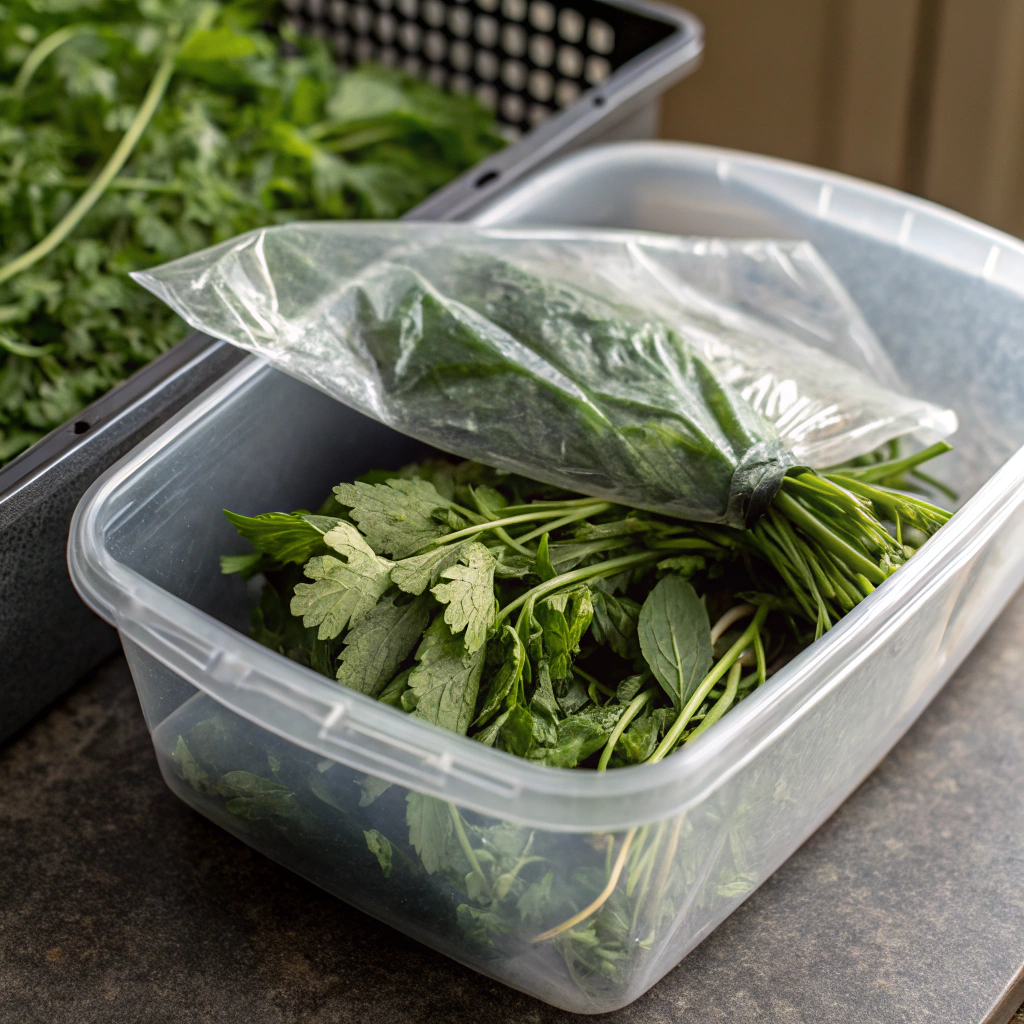
Matching Containers to Different Herb Types
Soft Herb Storage Solutions
Different soft herbs need specific homes to stay fresh. Basil, parsley, cilantro, and mint do best standing upright in jars with a bit of water, just like fresh flowers. I learned this the hard way after countless bags of mushy herbs!
Fill a mason jar with about an inch of water, trim the stems at an angle, and pop them in. For most soft herbs, I loosely cover them with a plastic bag to create a mini greenhouse effect.
One tip I picked up from my grandma – if you’re storing basil, skip the plastic bag since it’s super sensitive to moisture. Just change the water every couple days and keep it on your counter away from direct sun. How do you store soft herbs in your fresh herb storage containers?
Woody Herb Container Requirements
Rosemary, thyme, oregano, and sage need a different approach since they’re tougher. I wrap these sturdy herbs in slightly damp paper towels before placing them in resealable plastic bags. Push out as much air as you can before sealing – this prevents that dreaded brown slime from forming.
The key is to keep the paper towel just barely damp, not wet. I check mine every few days and give the towel a quick spritz if it’s dried out. My favorite trick is to write the date on the bag with a marker so I know how long they’ve been stored. What fresh herb storage containers do you use for woody herbs?
Multi-Compartment Fresh Herb Systems
After years of herb storage trial and error, I invested in a specialized herb keeper with separate compartments. It’s basically a fancy container with adjustable dividers and a water reservoir at the bottom.
The dividers prevent different herbs from crowding each other, while built-in air vents help control humidity. While these systems aren’t cheap, they’ve saved me money by keeping herbs fresh way longer.
I especially love using mine during the holidays when I’m juggling lots of different herbs for traditional recipes. Just remember to clean it thoroughly between uses to prevent any funky smells. Have you tried multi-compartment fresh herb storage containers? For more tips on keeping your herbs fresh longer, check out our complete guide to fresh herb storage.
Maximizing Your Herb Storage Container Lifespan
Temperature Control Basics
Finding the right temperature for herb storage can feel like solving a puzzle. Most herbs prefer the colder spots in your fridge, ideally between 35-40°F.
I keep mine in the crisper drawer, away from those super-cold spots at the back of the fridge that can freeze delicate leaves. Basil is the odd one out – it hates the cold and gets black spots in the fridge. Keep it on your counter where it’s room temperature.
If your kitchen runs hot in summer like mine does, try placing herbs away from the stove or sunny windows where temperature spikes can wilt them quickly. What temperature works best for your fresh herb storage containers?
Fresh Herb Container Humidity Management
Managing moisture is crucial for keeping herbs fresh longer. Too much humidity leads to slimy herbs, while too little dries them out. I check my herb containers daily and adjust as needed.
If you spot condensation inside the container, prop the lid open slightly or add a paper towel to absorb excess moisture. For herbs that look wilted, try the ice bath trick – a quick 5-minute dip in ice water can perk them right up! Just make sure to dry them thoroughly afterward.
I learned this tip from a chef friend and it’s saved many herbs from the compost bin! How do you manage humidity in your fresh herb storage containers?
When to Replace Your Storage System
Even the best herb storage containers need replacing eventually. Watch for signs like cracked lids, warped bases, or stubborn odors that won’t wash away.
I replace my plastic containers yearly since they can absorb flavors and develop scratches that harbor bacteria. For glass containers, inspect the seals regularly – they often wear out before the container itself.
If you notice herbs spoiling faster than usual despite proper care, it might be time for new containers. I mark my calendar to deep clean my herb storage system monthly with vinegar solution. When was the last time you replaced your fresh herb storage containers?
Start Your Fresh Herb Storage Journey Today
Start small with two or three favorite herbs. Set up a designated counter space or fridge shelf. Gather basic supplies: glass jars, plastic bags, rubber bands, and paper towels. Label everything clearly.
